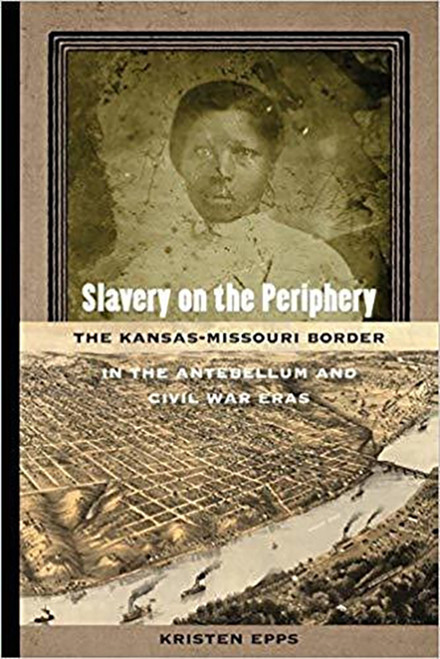Slavery on the Periphery: The Kansas-Missouri Border in the Antebellum and Civil War Eras by Kristen Epps
Slavery on the Periphery traces the rise and fall of chattel slavery on the Kansas-Missouri border from the earliest years of American settlement through the Civil War, exploring how its presence shaped life on this critical geographical, political, and social fault line. Kristen Epps explores how this dynamic, small-scale system--characterized by slaves' diverse occupations, close contact between slaves and slaveholders, a robust hiring market, and abroad marriages--emerged from an established upper South slaveholding culture. Awareness of space and local landscapes was also a defining feature of slaves' experiences, because slave mobility could be a powerful means of resistance. This mobility became particularly crucial when the sectional conflict escalated in the 1850s and 1860s, as both enslaved and white residents became central players in a violent national struggle over the future of slavery in America.
Drawing on extensive archival research, Epps makes clear that slavery's expansion into Kansas was more than a theoretical, ideological debate. Chattel slavery was already extending its grasp into the West. By foregrounding African Americans' place in the border narrative, Epps illustrates how slavery's presence on this geographic periphery set the stage for the Civil War and emancipation here, as it did elsewhere in the United States.
About the Author
Kristen Epps is an associate professor of history at the University of Central Arkansas. Her work has been published in the edited collection Bleeding Kansas, Bleeding Missouri: The Long Civil War on the Border.
Product Specifications
Published by University of Georgia Press, 2018. Paperback, 284 pages.







